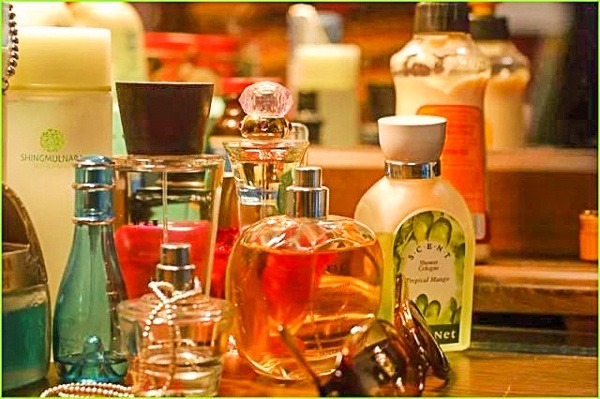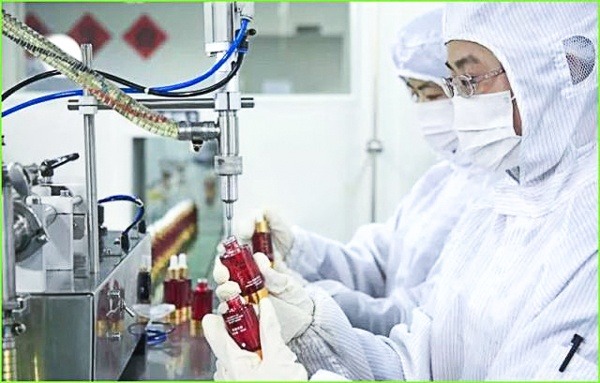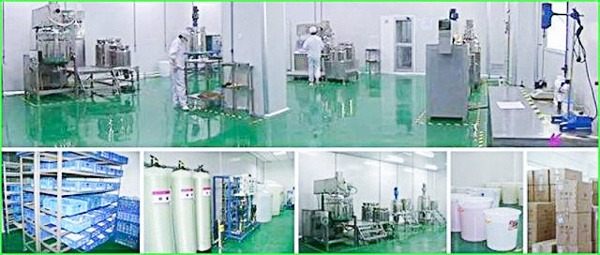In general, cosmetics are in direct contact with human skin.Therefore, the cleaning and disinfection of the entire production environment in the workshop is particularly important . During the production of cosmetics,disinfection and cleaning of cosmetic machinery and equipment are very important.So, what do you know about the disinfection methods of cosmetics machineryand equipment? YK is a professional cosmetic equipment manufacturer.We have some useful information to share with you.
1.Steam sterilization
Steam disinfection is a commonly used disinfection method in the production of cosmetics.Because most cosmetic production sites have steam sources.The temperature of the steam is very high, so the sterilized cosmetic equipment must be heat-resistant. The 304 or 316 stainless steel used in the cosmetics machinery and equipment we manufacture is in full compliance with steam sterilization standards.Steam sterilization is required for time.In general, it usually takes 30 minutes to disinfect the open container .If it is a pressure vessel, use autoclave, contact time can be shortened to 5 ~ 15min.The advantage of steam sterilization is that it is effective and does not require rinsing after disinfection.The disadvantage is that the energy consumption is large and there must be a boiler.The same type of disinfection method has hot water disinfection.Pipeline disinfection can be circulated with hot water at 90°C.
2.Chemical disinfection
The traditional disinfection method generally uses the method of chemical disinfection to disinfect cosmetics equipment.This method is generally cold disinfection and does not require heating.Chemical disinfectants commonly used in cosmetic pipes and equipment include ethanol, chlorine dioxide, peracetic acid, and sodium hypochlorite.Disinfecting equipment and pipelines with chemical disinfectants must fully understand the material of the equipment and the performance of the disinfectant.According to the appropriate disinfectant concentration and effect time, ensure the disinfection effect.
2.1 Ethanol
Ethanol is a medium-effect disinfectant. It kills bacteria, Mycobacterium tuberculosis and most fungi and viruses. The disadvantage is that it cannot kill bacterial spores.
2.2 Carbon dioxide
Chlorine dioxide is a highly effective disinfectant with an efficient, broad-spectrum bactericidal action.Chlorine dioxide can oxidize and decompose amino acids in microbial proteins.Eventually the chain of amino acids breaks, the protein loses its function, and the microorganisms die.The disadvantage is that the organism has a certain influence on the disinfectant. Chlorine dioxide is corrosive to carbon steel, aluminum, stainless steel, etc.The bactericidal effect is mostly influenced by the activator concentration and activation time.
2.3 Peracetic acid
Peracetic acid is also called peracetic acid.It is one of the most prominent disinfectants among all chemical disinfectants.It is a highly effective disinfectant.It relies on strong oxidation to inactivate enzymes and kill microorganisms.The disadvantage is that high concentrations are stable but when the concentration exceeds 45%, violent oscillation or heating can cause explosion.It is corrosive and bleaching, has a strong sour taste, and has significant irritation to the skin and mucous membranes.
2.4 Sodium hypochlorite
Sodium hypochlorite can diffuse through negatively charged bacterial surfaces.Sodium hypochlorite can diffuse through negatively charged bacterial surfaces.It destroys the bacteria’s phosphate dehydrogenase, which causes imbalances in sugar metabolism and causes the death of bacteria.The disadvantages are instability, and effective chlorine is easily lost.At the same time, the fabric has a bleaching effect; it is corrosive; it is easily affected by the organism, pH, etc.
3.Cleaning and disinfectant
The cleaning and disinfecting agent is suitable for aseptic packaging, space disinfection, environmental disinfection, cleaning containers, pipelines, etc. in the cosmetics industry, and can be used for water disinfection and air environment disinfection.
In the cosmetic production process, manufacturers must not only use high-quality cosmetic production equipment.Also need to pay attention to the cleaning and disinfection work in the cosmetic production process and do detailed work.From the aspects of raw materials, equipment, and environment, we will strengthen the detection of microorganisms and strictly control the quantity of microorganisms. This will prevent the generation of microorganisms and ensure the quality of cosmetics, thereby promoting the long-term and stable development of the cosmetics industry.









